About BOL Gallery:
Nestled within a stunning heritage building in the heart of the city, BOL Gallery is a gallery that endeavours to bring you an array of exquisitely curated paintings, art crafts, ceramics, and furniture while also celebrating the unique architectural and cultural heritage of its historic location. Born out of Lee Soo Jung’s passion for Korean ceramics and lifestyle products, BOL Ceramic has grown into BOL Gallery and now has a gallery space to call home in Singapore.
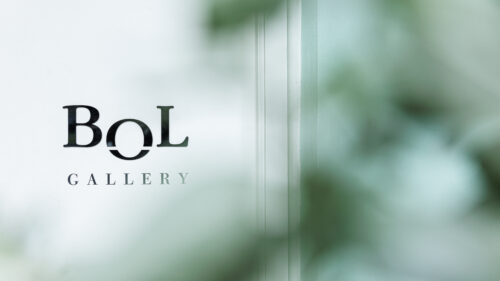
BOL Gallery strives to be a space where it can honour and share the artisanal works of the finest Korean artists. Featuring exceptionally-made and handcrafted pieces of work by Korean artists which seek to share the artist’s intentional creation process, BOL Gallery strives to provide a place for people to communicate with art, through art.
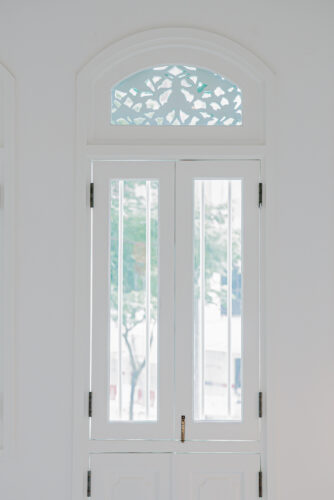
Visit BOL Gallery to experience and immerse yourself in the space. Be captivated and inspired by the allure and timeless beauty that its artworks bring.

Curator’s Statement
Any one of us would have drawn a picture with our hands in our childhood. Humans draw seemingly by instinct, and this primitive act would not have taken precedence when drawing a picture, regardless of the matter.
The movement of the hand would have been unstoppable, and along with it, the twist and turn of thoughts along with the movement of the hand. Perhaps, for a person who draws, only the instinctive will of ‘I want to paint with my hands’ would be the most distinct thought.
<HAND TO EYE> was planned upon the artists who work with what leads from hand to eye. The artists, who have the commonality of being a generation that had experienced the sensibility of the analog era of the late 20th century and the unprecedented overflow of images of the 21st century digital era, try to get closer to what they are looking at without being bedazzled by the waves of countless images. As such, painting is pursued as a research and result.
By withholding the judgement in the observation of an object, an image can be created by building up layers through hands-on labour of your hands. Those accumulated layers would then layer on, transform, be overturned, destroyed, removed or damaged in their own way, and in that process, the deficiency in images of the digital age are replaced with materiality unique to painting.
Through this process, it is hoped that for artists living in the modern age, painting becomes no longer a means that reveals a certain belief, but only the belief that painting is painting, and that in the end, only research or practice that is reached with the eyes through the hands remains.
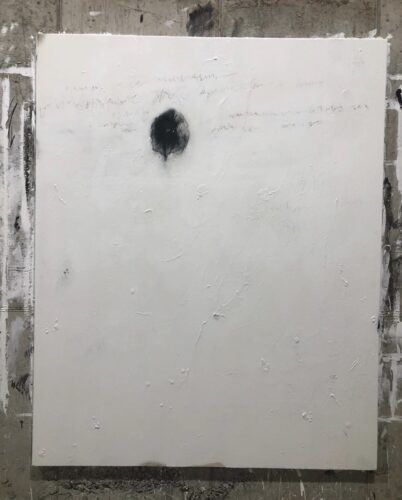
Untitled_
mixed media_
162×130 cm_2021
Kim was born in Seoul in 1973, immigrated to the United States at the age of 14, entered and dropped out of an art college, and moved to India at the age of 30. His six years of living in India became a turning point for him to develop an aesthetic eye that is unique to him, as well as to be able to see things outside of what he is used to.
The artist believes that true creation is achieved when free from all confusion, and resembles the image of an ascetic pursuing goodness. Setting off without any result or goal on a large, unframed canvas, he repeatedly draws and erases, and through this process, change is naturally created on the canvas. On such a canvas, some things are faintly visible or covered, and on the contrary, clearly visible things and concrete images whose form and meaning are unknown are mixed, opening up the possibility of various interpretations of meaning to the viewer. By using canvas that is dyed with coffee, a sense of depth is added to the artwork when white gesso is painted on the canvas, which presents a new shade of white created in the dyeing process.
When white is painted on white, the previous colour is covered. However, if white gesso is painted on a canvas dyed with coffee, the colour continues to rise as if the coffee is alive. Thus, this repetitive act of re-painting becomes a meditative process for the artist, as he likens it to looking within one’s self, and creating new heights in the process.
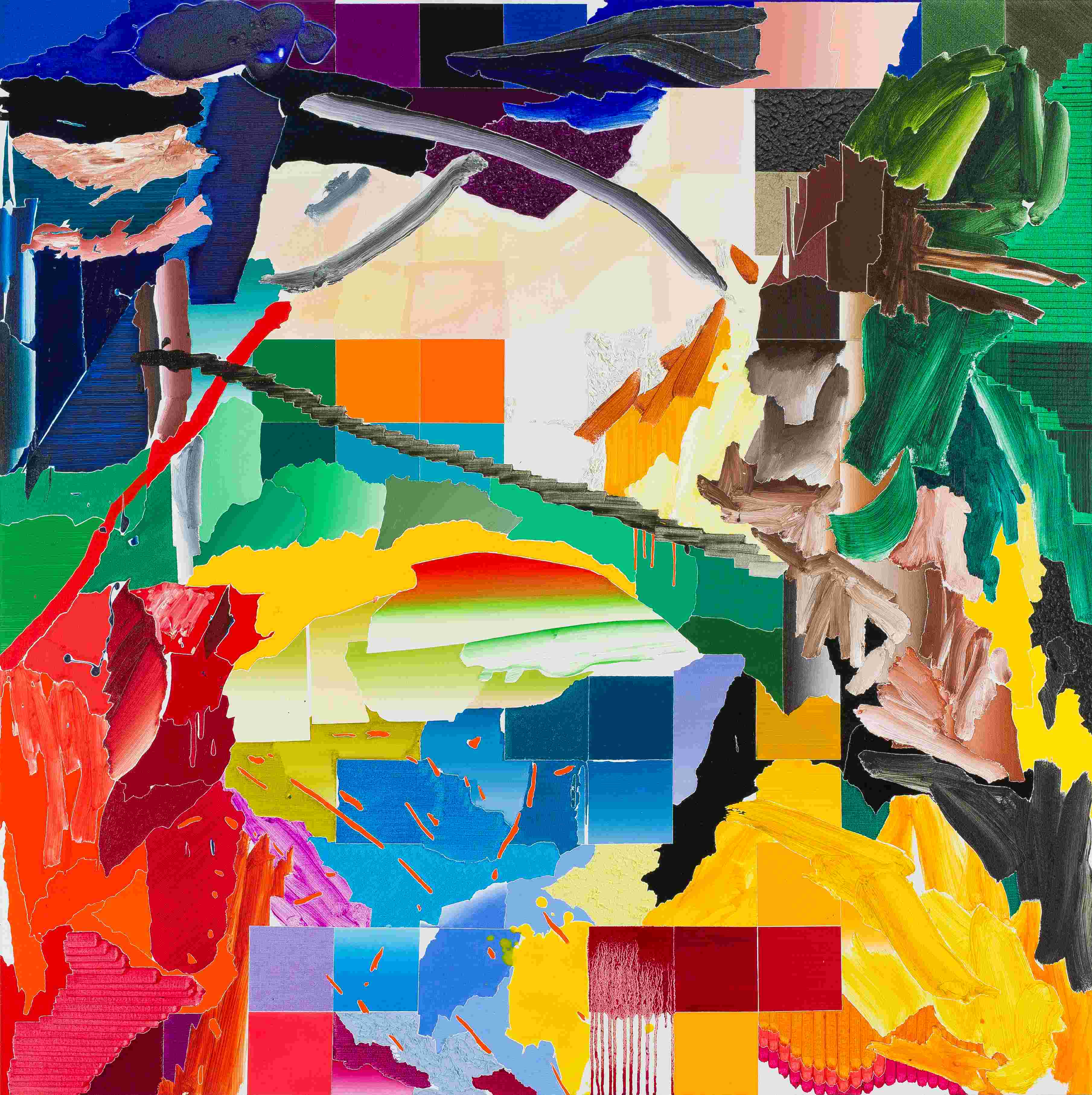
After DeKooning No.3_
168 Color Oil Paint, Cotton Canvas_
150×150 cm_2018
Kim’s painting exists as a process of the artist’s intrinsic question and response toward painting. In his work, tools and methodologies such as brushes, paints, canvas fabrics and frames, picture frames, and pictorial techniques reveal a persistent search for the position and potential of painting.
For example, the <After de Kooning> (2016-18) series dismantles the sensuous techniques of American expressionist Willem de Kooning and recombines them in his own language.
In <Filbert Family> (2018-22), using the Filbert Brush, the original shape of the brush is used as a unit to construct a geometric screen. He recognizes the historical references and customs that visual arts have owed for a long time, and is establishing arbitrary rules to rewrite them in the present language one by one.
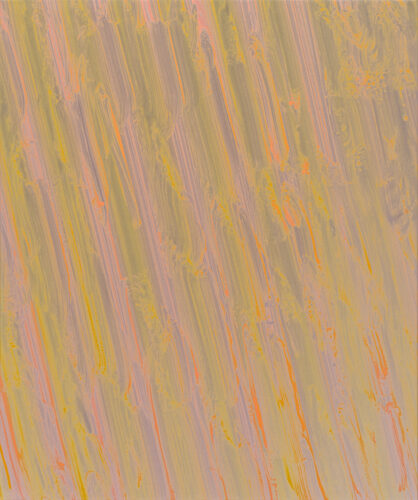
Wipe001pnkrf_
Acrylic on refractive fabric_
60×73
Lee’s work is produced through the intersection of intention and coincidence, planning and intuition. Intrigued by the colours on the tissue paper used for testing in the colouring process than the colour on the surface on the cavas and the gradation left on the masking tape used and discarded in the process of creating, he found the source of inspiration for his work.
Colours that do not seem to match are juxtaposed to create layers, and a subtle sense of space arises at their boundaries. This relationship between colour and form is sometimes modified by an intuitive judgement that deviates from the initial intention. Like a traveller who gave up on arriving at his destination in the shortest distance in an unfamiliar city and decided to have fun, he is swimming on an empty canvas and polishing his senses. By refusing to set a boundary between art and non-art, he instead lets the world inspire his work in things and places almost forgotten, such as faded construction site tents, mould growing on bread that has not been disposed of, billboards in former complexes with countless colours and shapes piled up on top of each other, and broken glass. Sunlight or nighttime lighting on top of this exquisitely matched and revealed forms are sometimes more wonderful than any other artist’s work.
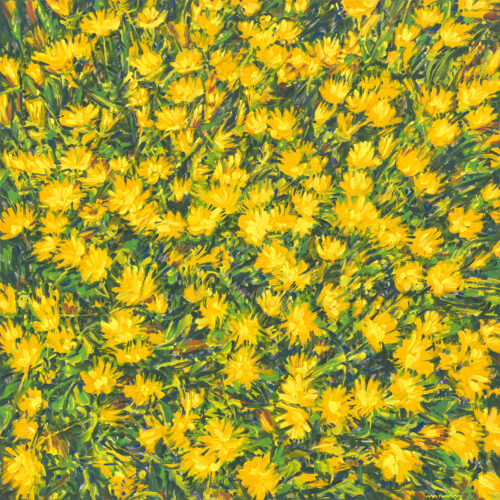
Yellow Abstract 3_
Oil on Canvas_
72×72 cm_2022
The repetition of this turbulent cycle of plants, in which the seemingly everlasting greenery succumbs to the snap of the cold wind, resulting in the falling of leaves, is an effective metaphor to concretely express the flow of time in the human world. Hur explores through plants, the passage of time, the joys and sorrows of emotions, as well as the inevitably persistent will to live and life force of humans that cannot be overlooked.
That is why Hur’s work is not far from life, food, livelihood, and family. The hunger that reliably comes, the preparation of meals, the drowsiness that comes with the darkening day, and the waking up dazzled by the sunlight, all seem to parallel a day in the life of a tree outside the house exposed to the elements.
On a random day, while looking closely at her palm, she spent days pondering whether the wrinkles reflected on it, called palm lines, are the veins of green leaves.
A wave of golden flowers in full bloom along the roadside, and as they give themselves to the wind and sway relentlessly, one would be able to relate to the human condition in which one’s heart reels at the slightest word another.
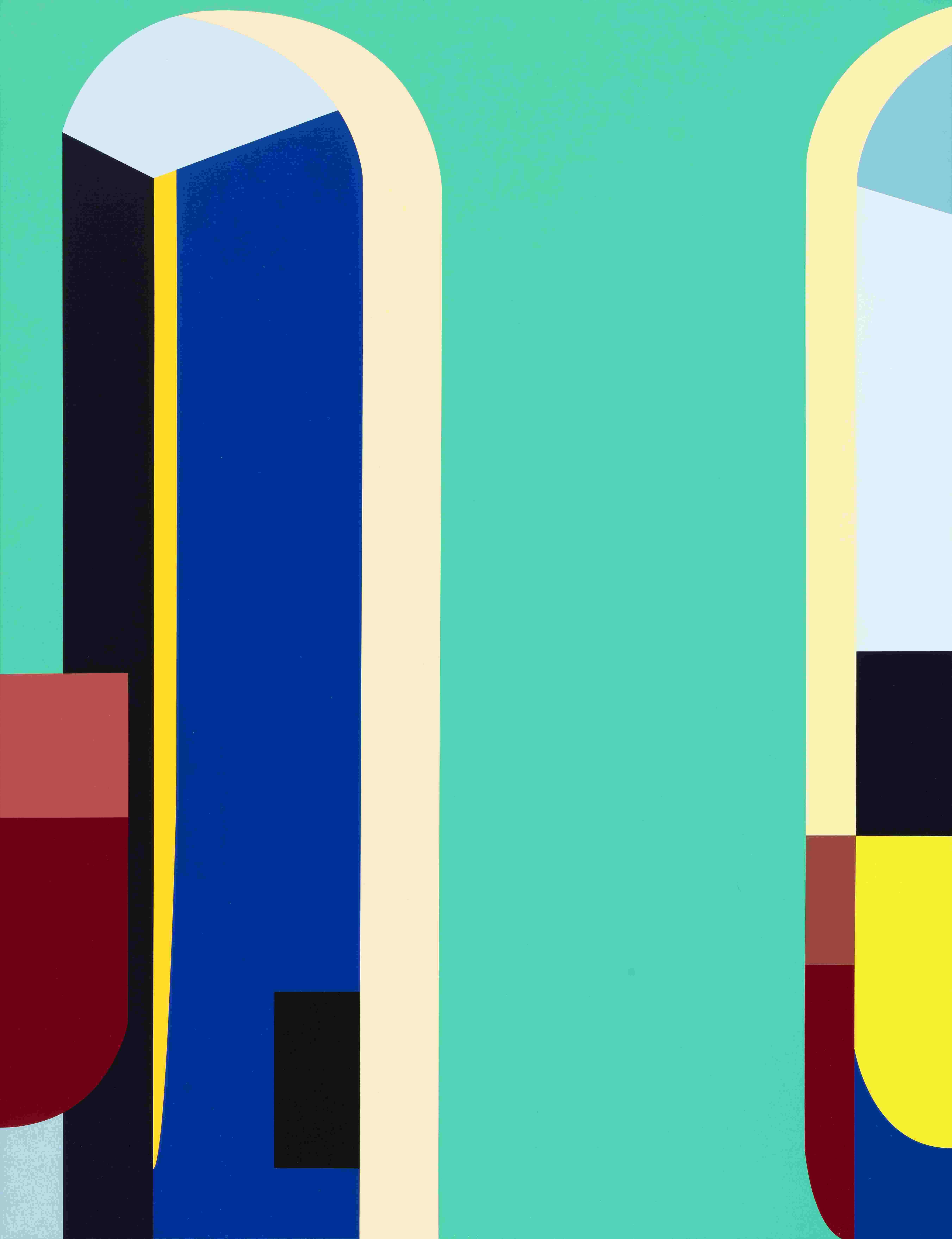
Reflection_
acrylic on linen_
145x112cm_2021
Pak constructs her own ideal space by repeatedly assembling, constructing, and sometimes dismantling the world using small units called Legos. This method, named “legoscape(-ing)”, constructs buildings in an orderly way, as if building Legos, while focusing on curved lines. However, at the same time, the artist’s idea that perfect colours and spaces do not exist is expressed, so one would be able to feel the complicated and chaotic psychology with which this work was built.
“LEGOSCAPE”, which was created by changing the medium for the purpose of specific visual exploration, is based on the deconstruction and simplification of the structural form of Lego, ultimately expressing it as geometric abstraction.
In the creation of this series, which is characterised by minimalistic, linear and abstract colour field composition, the colours of the divided planes are harmonious, but paradoxically, the parts that collide with each other make the viewer feel ambivalent. The work created in this way seeks to reach a new world away from the real world dominated by the system, and to balance the imperfect world.
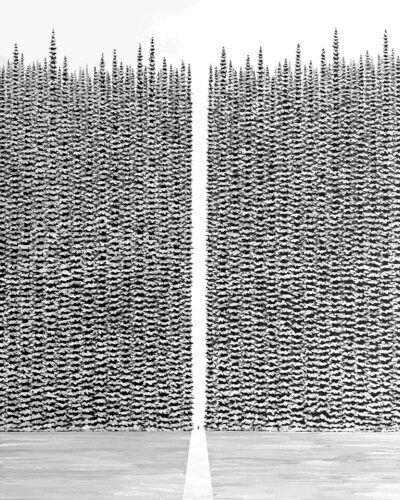
Walking into the light_
Acrylic on canvas_
162.2 x 130.3cm_2022
Thinking about the way to live life is one of the most important life attitudes to have while living. The thought is necessarily made through the exploration of one’s inner self, and in order to access that part of one’s self, voluntary silence and solitude are necessary, yet most modern people live without recognizing or ignoring their solitude.
Therefore, the works on ‘voluntary silence and solitude’ do not deal with the emotions of a gloomy day but rather provide a foothold for a journey to the inner world by touching each person’s solitude through paintings.
Through the solitude and silence in the painting, the purpose of all these works is to discover the fundamental loneliness hidden within oneself, and to think about the lonely existence of ‘I’ and the sea-like life once more by facing it. It is the essence of creation.
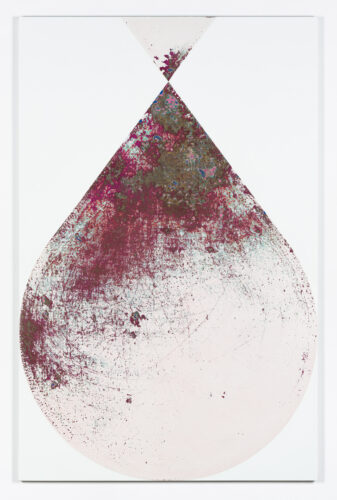
Rabbit Skin Glue, Linseed Oil, Chalk, Pigments, Egg Yolk_
116×180 cm_2018
In Lee’s egg tempera work, linear time is twisted non-linearly through the process of scratching and erasing the layers of paint that have been piled up.
The process of building up paint along linear time is a record of personal time and reflection. The rough texture of the reconstructed layers and pigments in the process of scraping off the stacked paints presents the painting in three dimensions and leads to ‘unexpected time and space’. The exploration of pigments and media associated with painting work enables awareness of temporality and the hidden labour behind the use of the pigment itself.
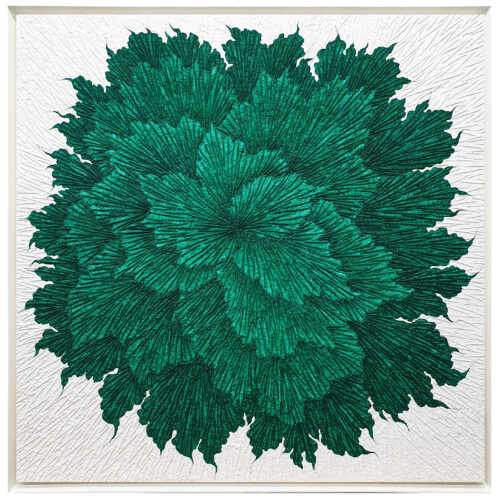
About Wish_
Sewing & coloring on Korean paper_
75x75cm_2022
Through creating artwork by applying the thread’s physical properties using coloration and needlework techniques on a handmade Hanji, a Korean traditional paper with an irregular texture, a result of blooming flowers that seem both realistic and unrealistic at the same time, allows a primitive, cosmic energy to be experienced through the observing eye.
A thread is a link that connects what has been disconnected, coming and going the front and back of the screen layered in piles, reaching an embodiment of a symbol of acceptance in the form of relief. The meaning of the thread that is mediated by the act of sewing represents communication with one’s inner self as well as a passageway to others. Within that time frame, an excitement about the future that has not come and a memory that has already passed co-exists.

Untitled_
Lacquer on fabric_
90x90cm
Even though he was not fully intentional in working with lacquer in the beginning, it became the medium which was the foundation of Huh’s art. The idea of using lacquer came from a desire to create colours that were more sensuous.
Fabric work lies under the monochromatic lacquer, where sandpaper is applied, followed by linen, and the viscosity of the plaster is thickened with lacquer on top of it, and then filled with soil.
Each layer takes ten steps to form, and a singular piece of art has twelve such layers, and as such, the creation of his work is a process which requires time and is inspired by time. Every layer becomes part of the history of the artwork itself and at the end of the process, the desired colour is painted as the final layer, to create a canvas.
For more information or viewing BlackBookAsia VIPs email: vip@blackbookasia.com